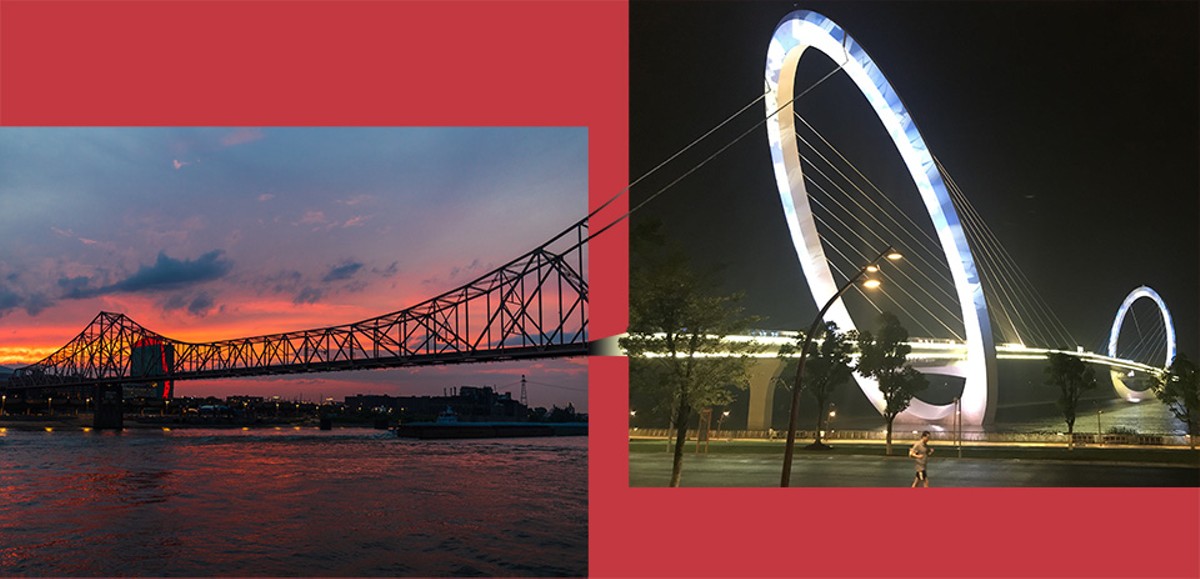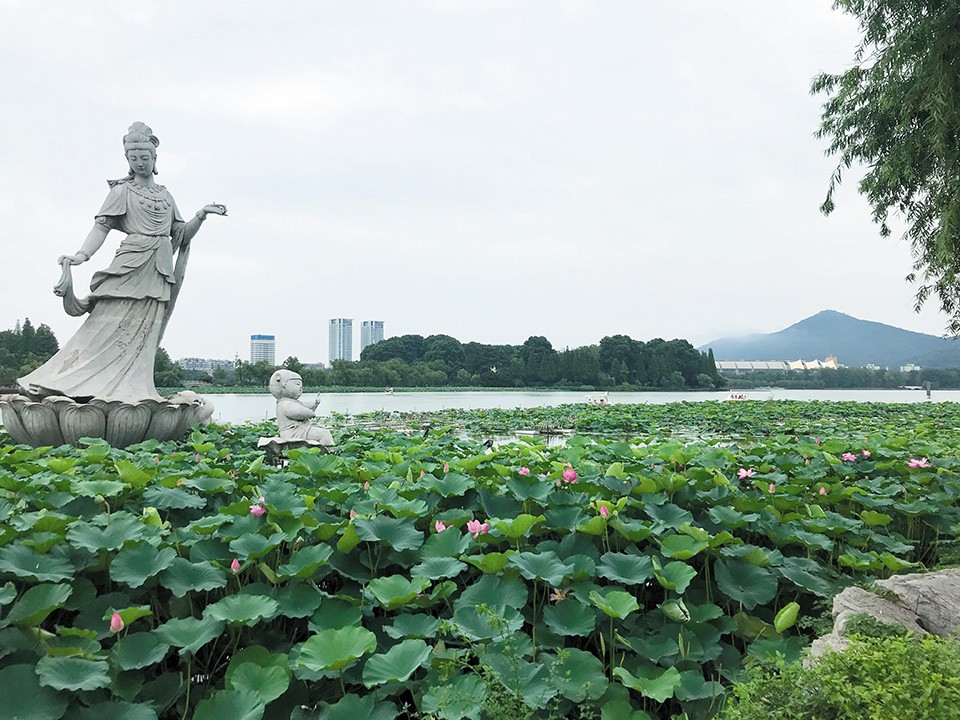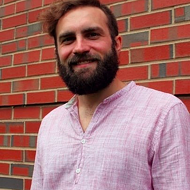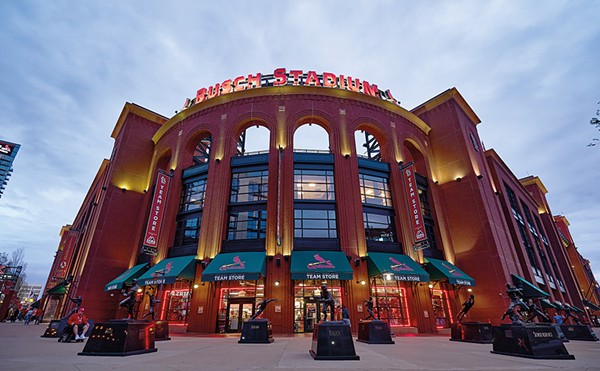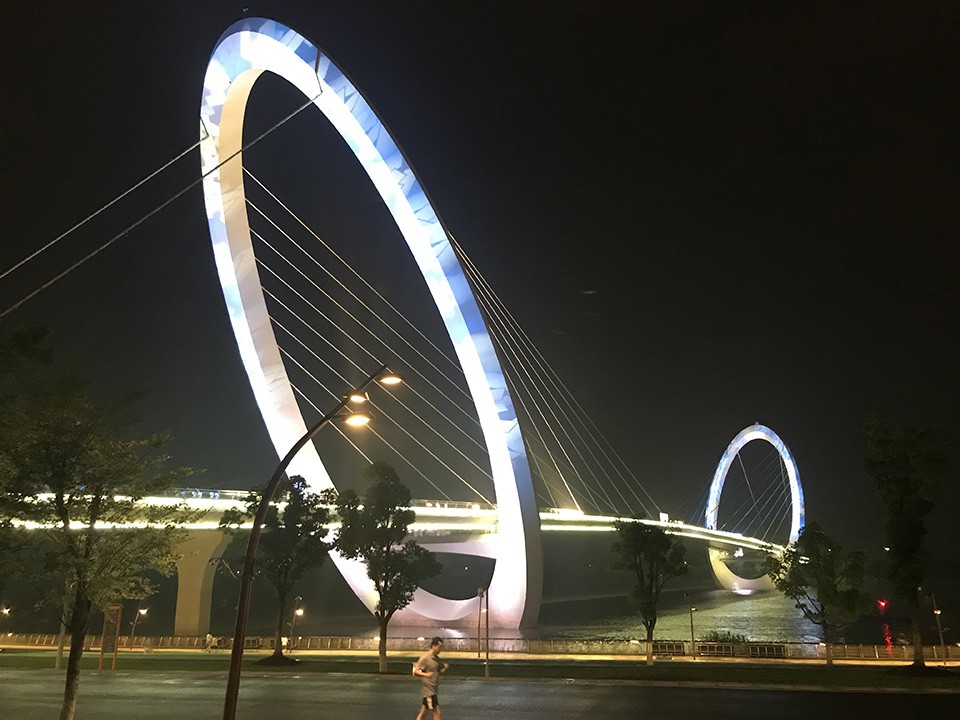
In the evening the Sister City Committee hosts a dinner for the delegation at Kemoll's on the 42nd floor of One Metropolitan Square downtown, with its famous view directly overlooking the Arch grounds. It is a swanky affair with about 80 guests in attendance. Seated at the head table with Lan are St. Louis deputy mayor for development Linda Martínez, former mayor James Conway, Perryman, JP and Hermann.
Lan, speaking through an interpreter, says, "We take much pride in becoming the very first pair of cities between China and the United States. Over the past four decades we have forged very deep engagement which has further enhanced the understanding between our two communities."
Martínez, also speaking through an interpreter for the Mandarin speakers in the audience, says, "Today we strengthen a strategic partnership with an eye toward the 21st century by entering into three landmark accords with our Chinese friends. These framework agreements will foster joint innovation to ensure the next 40 years will be as fruitful as the past 40 years."
The three accords concern the two cities formally renewing their commitments to joint cooperation in the areas of business, research, education and cultural exchange.
The event has a familiar, convivial atmosphere fitting for two cities who have been partners for nearly four decades. Jokes are made about baseball and the warmth of Midwestern welcomes. Much shade is given to slow-footed San Francisco. Lan quips that Nanjing and St. Louis can exchange a lot of things, but that Nanjing can't compete in baseball. Half the room laughs when jokes are made in their native tongue; the others wait until Ding Zhao, who is kept busy as interpreter, catches them up.
One of the big reveals of the evening is that the two statues of baseball players won't be generic. The previous night Perryman got the OK from the Cardinals to put the statue of the Nanjing baseball player in Ballpark Village, and he also got the OK from Cardinals pitcher Adam Wainwright for the statue in Nanjing to be in his likeness.
Wainwright responded to the idea enthusiastically, Weber notes, remarking that there are a lot of statues of baseball players around the U.S., but how many ball players can say they have a statue in China?
"When this statue is in Nanjing, representing a connection between our cities, kids are going to walk by that and say, 'What is baseball?'" Perryman says. "And that will lead to them learning about our culture and our people in a way that is very beneficial to our understanding of each other."
The details of the 40th anniversary have yet to be finalized, but Perryman went to Nanjing in late July to discuss next year's plans with the Nanjing Foreign Affairs office. Very likely, he says, a group of St. Louisans will be going to Nanjing and a group of Nanjingers will come here. Since Lan has come to St. Louis, officials in Nanjing are keen to have Krewson visit. The Wainwright statue will likely be installed either outside the Nanjing Youth Olympic Stadium or, possibly, at a brand-new park dedicated to the sister-city relationship with St. Louis.
Hermann and JP were at the July meeting in Nanjing, too. But when they tell me about it, they're back in St. Louis. The couple, now officially engaged, is in the Gateway City because JP, who retired from her teaching job over the summer, has enrolled at UMSL. The last time she was a student was in China, when the country was still largely closed from the rest of the world; she's excited to study a more global curriculum.
If her initial English classes go well JP would like to move on to videography, eventually teaching Americans photography and videography while simultaneously teaching them Mandarin. Either that or she could go back to China and teach Chinese students how to take photos and shoot video while also helping them with their English. She'll have options. In the meantime, she's rented an apartment here and with Hermann's help is learning the finer points of driving in St. Louis traffic.
While JP studies in St. Louis, Hermann will still be in Shenzhen, though he plans to come back to his hometown every six weeks or so. Before he heads back to China he'll meet with various local organizations in the hopes that eventually the makeup of the St. Louis Sister City Committee will better reflect the city's diversity.
The last time I see Hermann and JP is just before the start of the school year. I ask her how she feels going back to school as a student after teaching for decades. JP responds by singing a few bars of "Shbo Shbo (Book bag, Book bag)," a song typically sung to children before their first day of school.
"Now all my friends back in Nanjing are singing that for me," she says.
Ryan Krull is a freelance journalist and assistant teaching professor in the department of communication and media at UMSL

